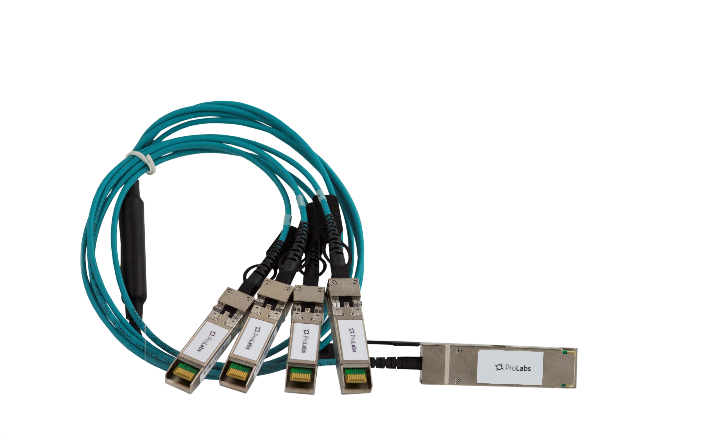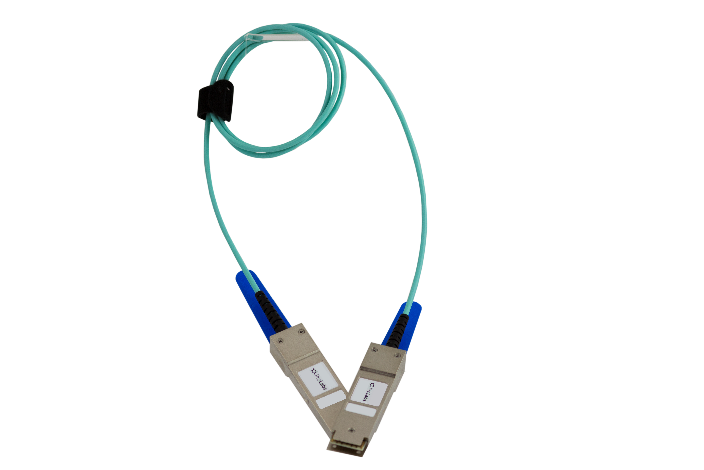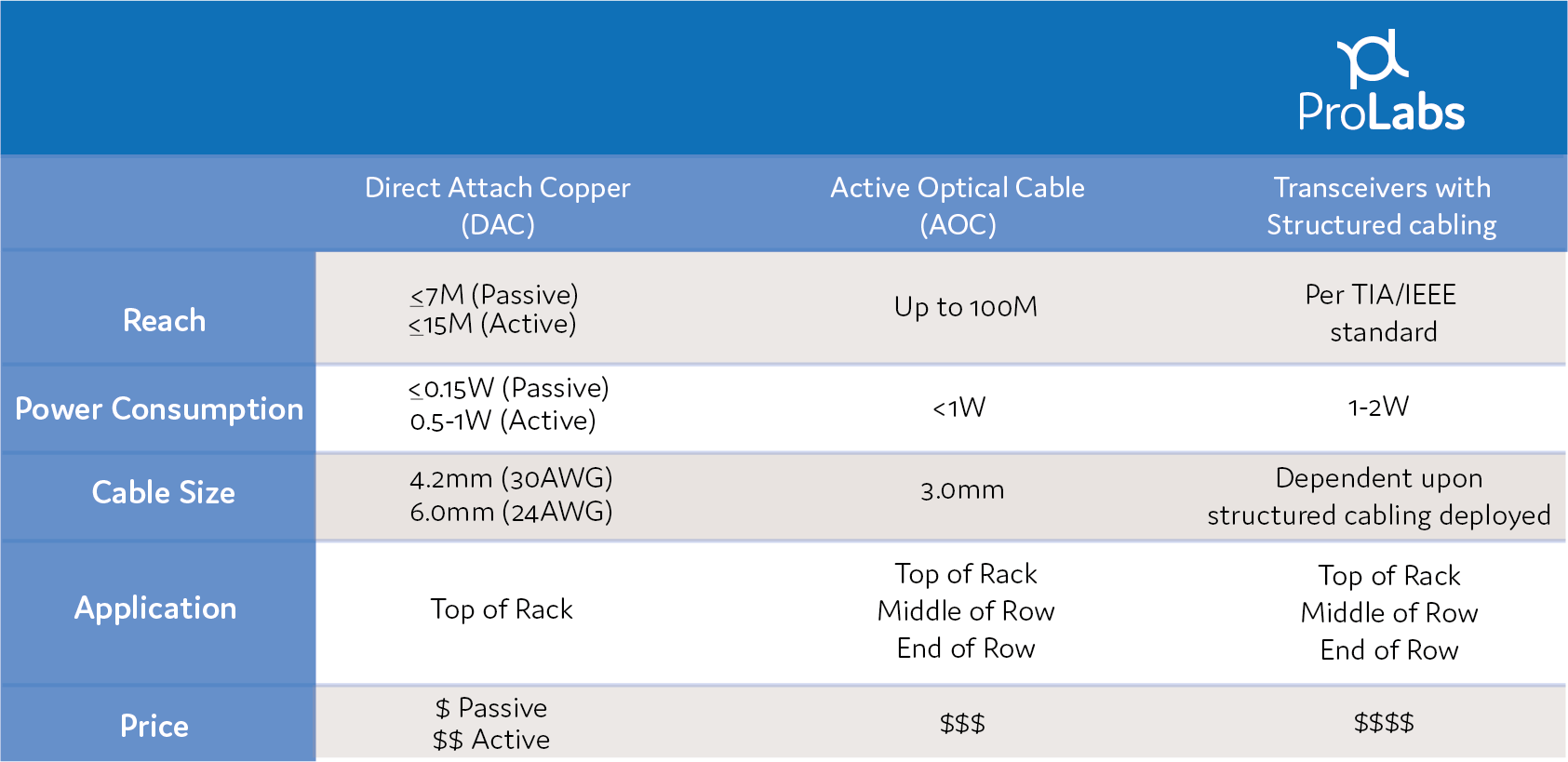Direct Attach Cables (DAC) and Active Optical Cables (AOC) are the up and coming contenders, growing in usage in the data center and enterprise networks. DACs and AOCs are plug and play, allowing existing cabling resources to turn up new connections without calling out specialized fiber optic or network engineering resources. DACs and AOCs are simply standard length cable assemblies with factory terminated transceivers on each end.


DACs and AOCs come in a variety of configurations to meet network requirements. Each is available in 10G (SFP+), 25G (SFP28), 40G (QSFP+), and 100G (QSFP28) data rates with additional options for breakouts from 40G to 4x10G or 100G to 4x25G variants.
Transceivers with structured cabling are still commonly used, offering the most flexibility in deployment, however at dramatically higher costs. The ability to custom tailor a transceiver and structured cabling solution to the application is only limited by the budget and time to deploy.
With that said, real-world applications are limited by both time and budget. Factors to consider when choosing network cabling options include:
- What is the Application? – Top of Rack, Middle of Row, End of row
- Media Availability - Do I have to run new cabling? Do I have patch cables on hand?
- Power Consumption – Is power consumption a consideration?
- Cable Management – How much space is available in rack and cable pathways for cabling?
- Distance – How long are the connections between ports?
- Budget – What is your budget for time and materials? What is your timeline?
Understanding the how DACs, AOCs or Structured Cabling address each of these needs will guide you towards the right cabling decision for your network. Here’s a quick reference guide to help you choose the best options based on your needs:

The ProLabs Promise
- Availability
- Interoperability
- Support
- Quality
- Warranty
- Value
